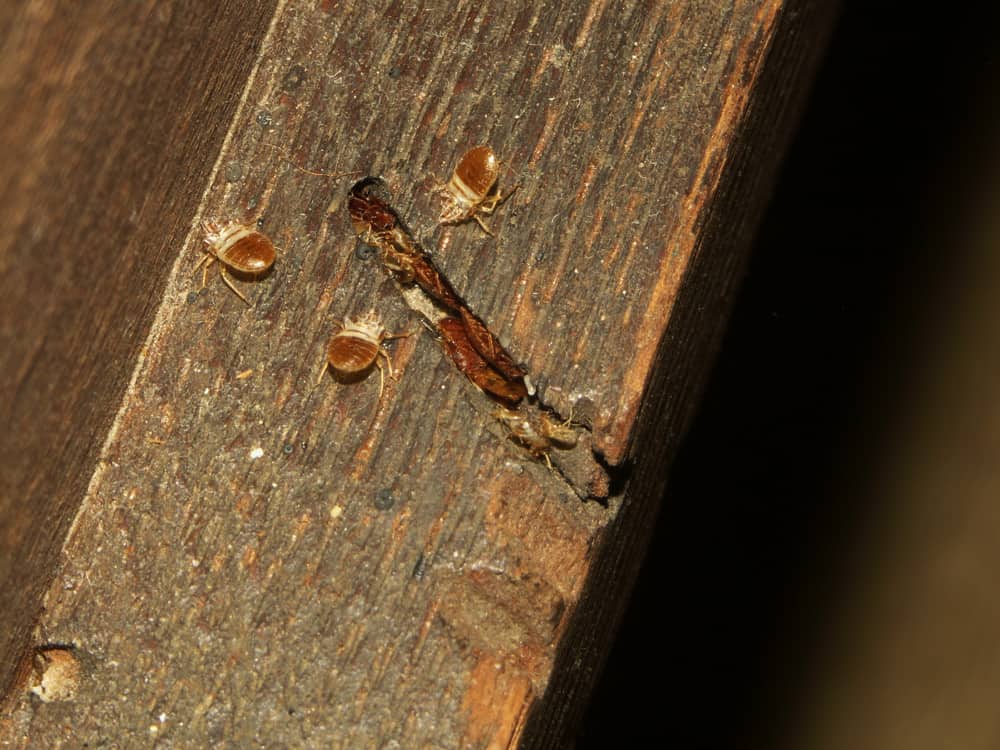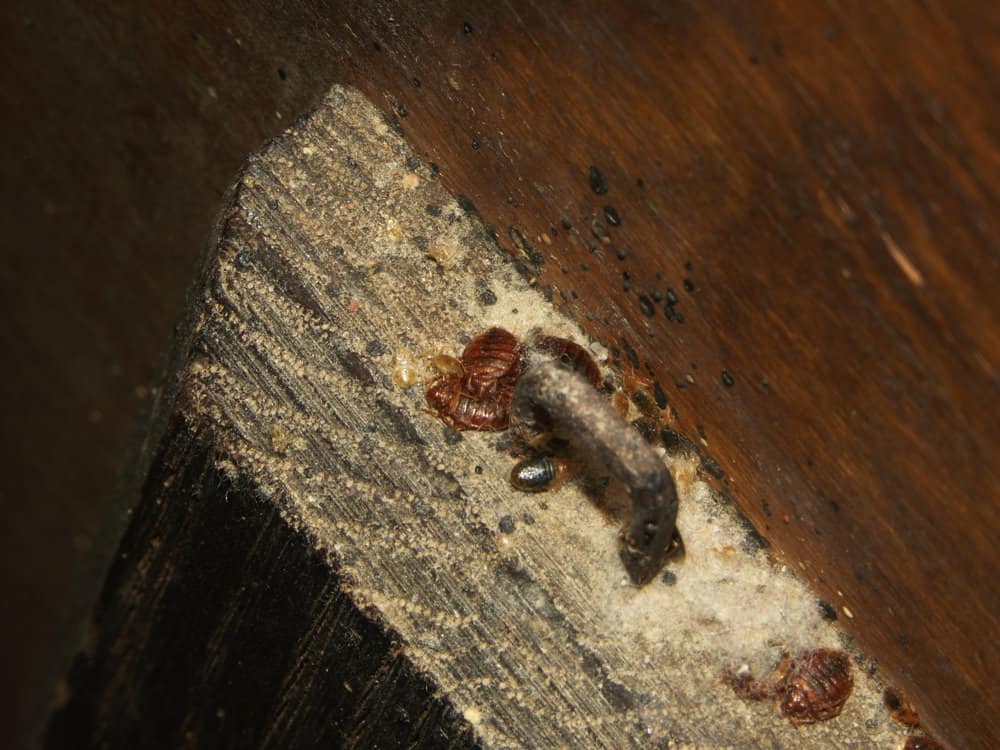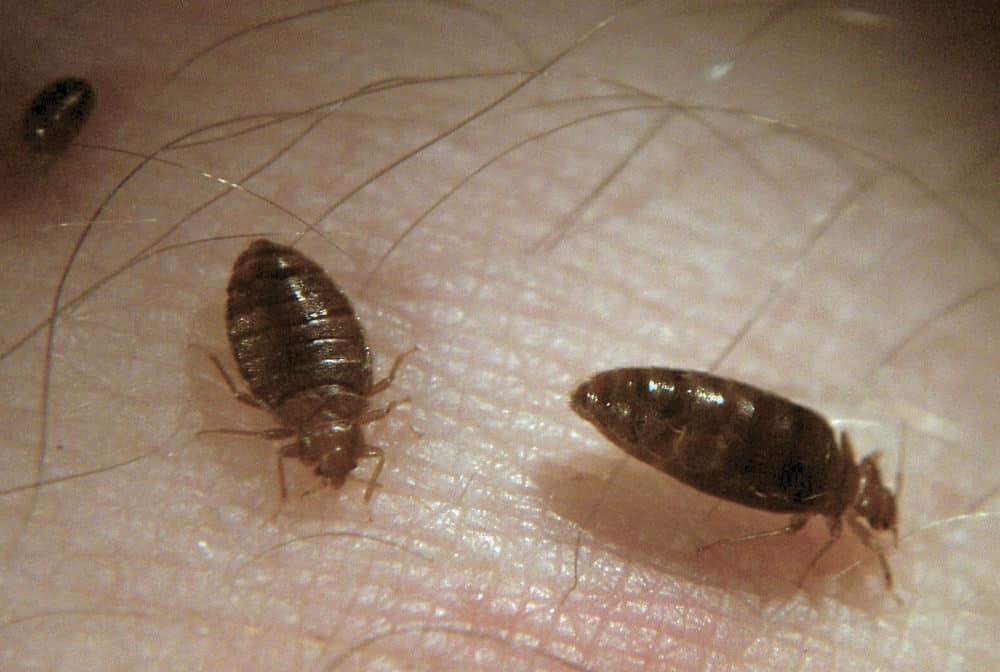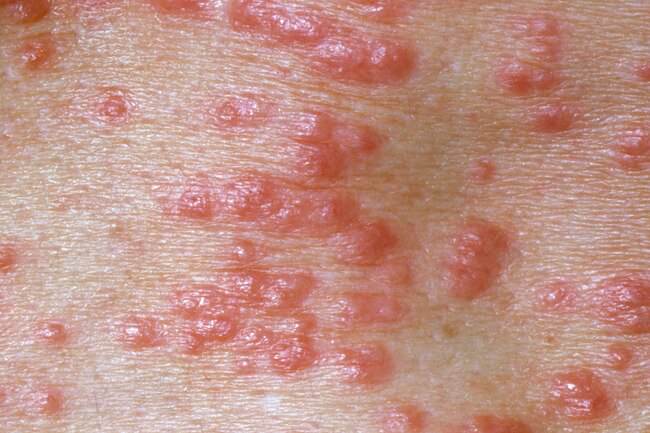Bed Bug Rash: Symptoms and Treatment
Most of the population has an allergic reaction to one thing or another. Bed bug bites are no exception. While some people won’t have any symptoms at all, others will develop a rash, or a swollen, red, raised welt from where they were attacked.
What Does A Bed Bug Rash Look Like?
Bed bugs will generally feed on exposed skin, which will include the torso, neck, arms, hands and ankles or feet. You can tell if you have bed bugs by noticing the characteristics of their presence.
You may notice small drops of blood on your bedding, cast skin shells in your sheets and even fecal matter left behind, which appears as small dark brown or black spots.
Because each person reacts differently, you will need to pay special attention to your particular side effects. In general, when there’s a reaction, the area will become slightly tender, start to turn red, and begin to itch.
When you develop a bed bug rash, it will appear similar to flea bites and can even look as bad as multiple mosquito bites. If the bites are close enough together, this can spread out over a large area and look a lot worse than it is.
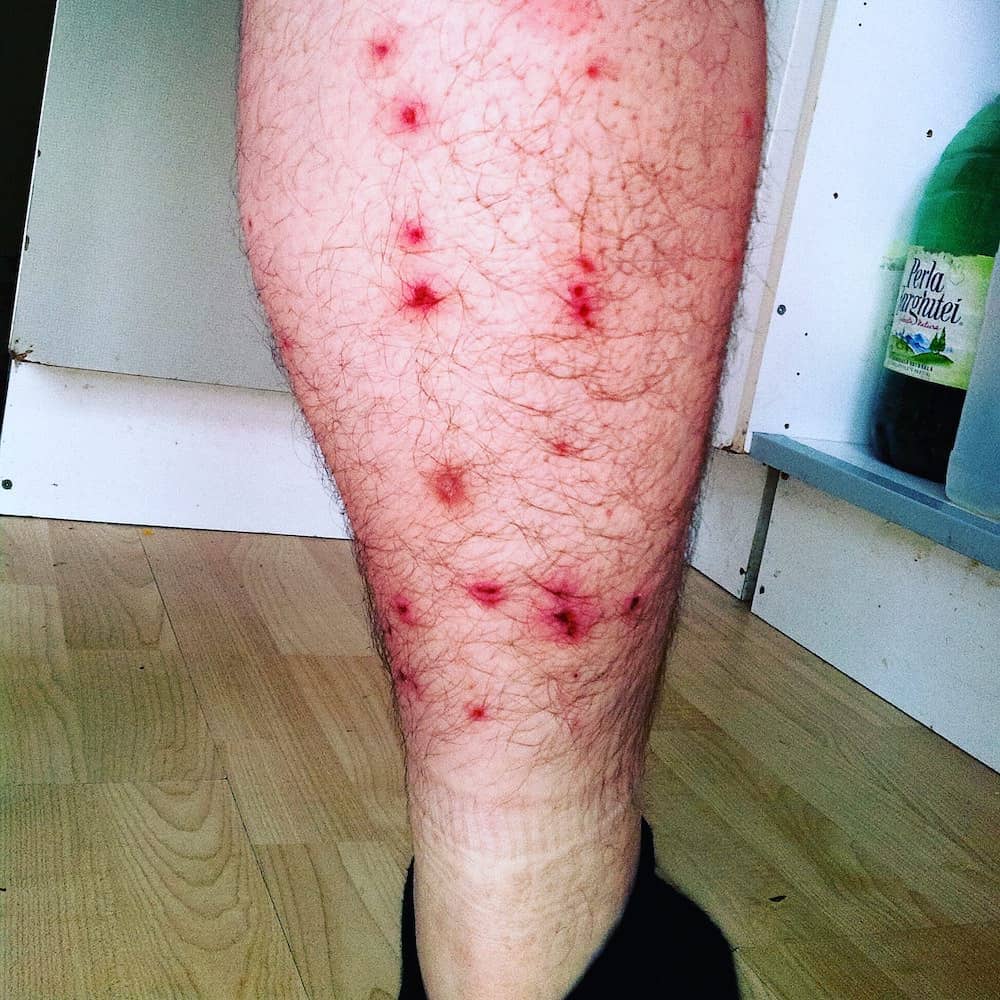
Side Effects and Symptoms
The toxins in the bed bug saliva that we react to will affect us all in completely different ways. Unfortunately, most symptoms won’t show up for a day or longer, if ever. This can make it even more difficult to know you have an infestation before it becomes out of hand.
The primary tell-tale signs are welts and redness at the bite location. Similar to a mosquito bite, the center where the bite actually took place will sometimes itch, or be tender to the touch.
The area around the bite will usually turn red and spread out from the bite location in various patterns.
Some people may not even display symptoms at all if they’re especially resistant to the effects of bed bug saliva. However, the actual bite location can still feel tender for a while, even without accompanying symptoms.
For those that suffer more severe reactions, the bites will burn at the location and the rash will develop quickly. If you sustain a more severe reaction, you should refrain from scratching and itching.
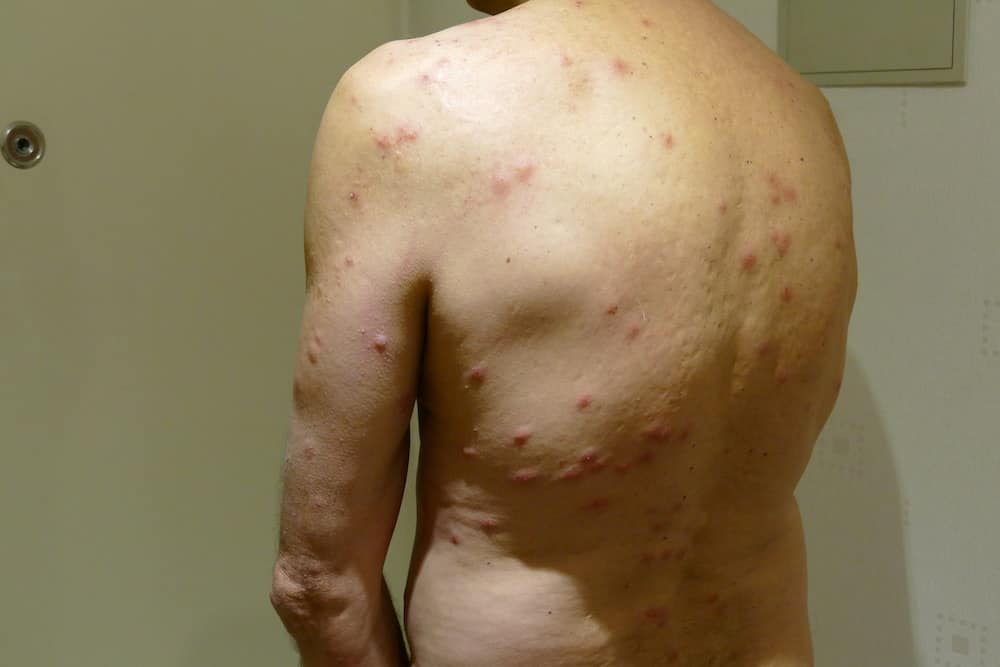
You should also be aware that bed bug infestations can cause anxiety, insomnia and other psychological problems if you become especially worried about them. Dealing with the problem quickly is the best method to restore your peace of mind.
Why Does A Rash Occur?
Rashes will generally only occur in those that have a moderate to severe allergic reaction to the bed bug saliva.
Bed bugs have a small scissor-like beak that will penetrate the skin and suck out the blood. Their saliva is mixed with a toxin that acts as an anticoagulant which allows them to feed on a single bite wound for about ten minutes without the blood clotting.
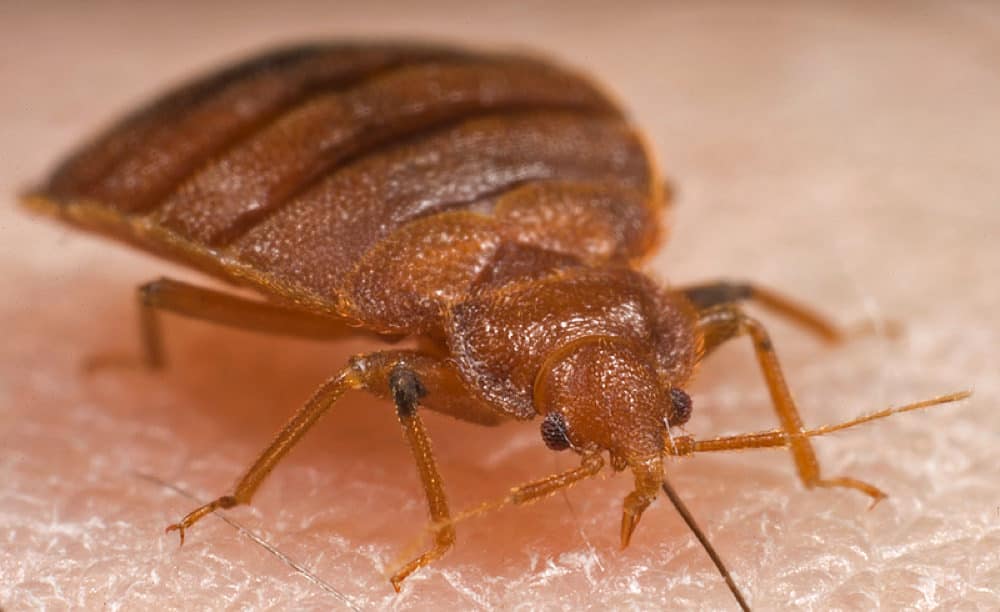
It is this anticoagulant that causes the reaction, if any, in our skin. Bed bugs also secrete a sweet and musty odor from their glands that is sometimes compared to that of coriander. In extremely rare cases this secretion can also cause a reaction in the bite location; however, the symptoms of this reaction are very slight and identical to the reactions from the anticoagulant.
Once we are sedentary, usually sleeping in our bed, or still in a chair for a length of time, the bed bugs will come out of hiding and begin to find an area of exposed skin to get their blood meal. They will crawl on our skin and find a suitable bite location and then break the skin with their beak.
Once broken, the secreted toxin will prevent the tiny wound from closing up so the bugs can drink the blood that escapes in small droplets.
When they’ve had their fill, bed bugs will return to their hiding spot and wait until they need another meal.
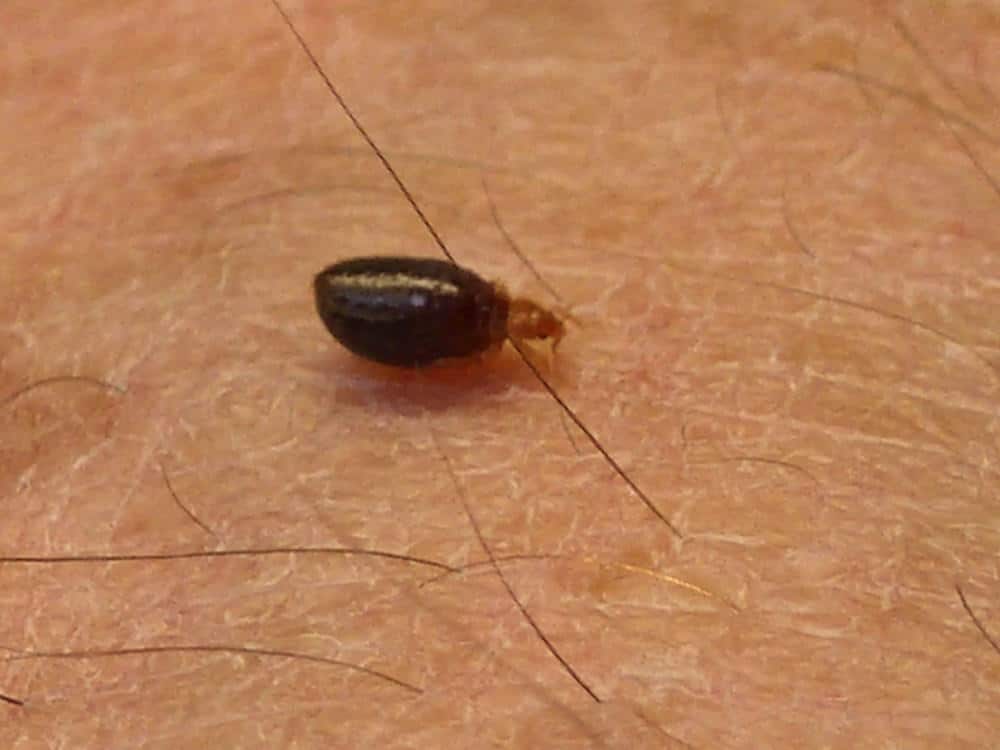
As the secretions and toxins sit on our skin and just under the surface where the bite took place, our skin will begin to react. Blood will rush to the area, bringing in white blood cells to help fight off the attacking toxins. This is why the bite areas turn red.
Our bodies will naturally try to seal the wound and will generally overpopulate the area with blood cells, resulting in welts and raised bumps.
How Long Does A Rash Last For?
Most rashes will begin to dissipate within a few hours of you waking up. The redness and swelling will usually be gone within a day or two. If you only had one bite that you reacted to, you should be completely symptom-free within 72 hours.
However, you are not likely to have only one bite. You can expect a multitude of new bites every night, especially if the infestation is large or growing.
Rash Treatment
Keeping your skin clean and refraining from scratching is going to be your best method of spreading the rash and getting rid of bed bug bites. If you scratch, you can cause a secondary infection and further bleeding.
Wash Well
Once you notice any redness and swelling, the best thing to do is to wash the area with warm, soapy water; rinsing well and patting dry. Keeping the area clean will reduce the risk of secondary infections. Remember, bites are open wounds and need to be treated as such.
Anti-Itch
You can also use any over the counter anti-itch cream to lessen the severity of any itching and. If over the counter creams aren’t working well enough, you can speak to a doctor or dermatologist for a prescription-strength anti-itch cream or ointment.
When using either prescription or over the counter lotions, you should follow the directions carefully. Do not overuse or overdose the medication as this could lead to other problems or symptoms.
Medicines
If you do not want to see your doctor and the anti-itch creams aren’t enough, there are products on the market designed specifically for bed bug bites. I, personally have not tested these products, however, some reviews are quite promising and the products are very popular.
As always, when using a new medication, even topical, you should follow directions as written and if you are ever in doubt, seek professional medical attention.
Severe Cases
In the event that you are highly allergic, or the infestation is so severe you have more bites than you can count, you should seek medical assistance. Welts, soreness or rashes lasting longer than a few days should also be looked at by a professional as they may have become infected.
Control The Source Of Infestation
One of the best ways to stop bed bug bites is to stop being bitten. This is easier said than done, but getting rid of the source of the bites is the end goal that you should definitely be striving towards. This can be done in a DIY way, or by consulting a professional pest expert.
How To Get Rid Of Bed Bugs With DIY Treatment Methods
Hiring pest control professionals can be costly, and while it’s usually the best option, there are some preliminary steps you can take to get rid of bed bugs yourself.
1. Carefully bag and wash all of your bedding and clear any clutter around the room. Bed bugs love to hide in piles of clothes, so remove these and wash them before you start cleaning.
3. Use a high-powered vacuum to clean around the bed to take care of stray bugs and eggs. Using a vacuum with a HEPA filter is vital to ensure bed bugs cannot escape once captured. The Shark Navigator Upright Vacuum easily ticks all of the boxes while remaining lightweight and easily maneuverable.
4. Use a specialist, non-toxic bed bug spray to clean your bed-frame, headboard, and surrounding furniture. Bed Bug Patrol Bed Bug Killer is a completely natural spray that has a reported 100% kill rate against live bed bugs in controlled tests, and most importantly, it’s child and pet-friendly.
5. Pull your bed away from the walls and place bed bug interceptor cups under each leg. These will isolate your bed and help to prevent the spread of bed bugs. Additionally, interceptors can serve as tools to help you track progress. Ideally, the interceptors should contain fewer bed bugs every time you empty them. My favorites are these Bed Bug Blocker Interceptor Traps.
6. Using a bed bug mattress protector to encase your mattress will either help to save it if it’s yet to be infested, or otherwise keep bed bugs trapped in and around it until they eventually die of starvation. My favorite is the SureGuard Mattress Encasement which is thick, strong, and will help to stop bed bugs of all sizes from getting to, or from, your mattress. A SureGuard Box Spring Encasement is also available.
7. If you wish to be extremely thorough, specialist bed bug heaters can be purchased to raise household items to a temperature that is sure to kill all bed bugs and eggs. ZappBug is the most popular option, and is designed to automatically reach the all-important killing temperature to eradicate all stages of the bed bugs life cycle. Large and small versions are also available.

